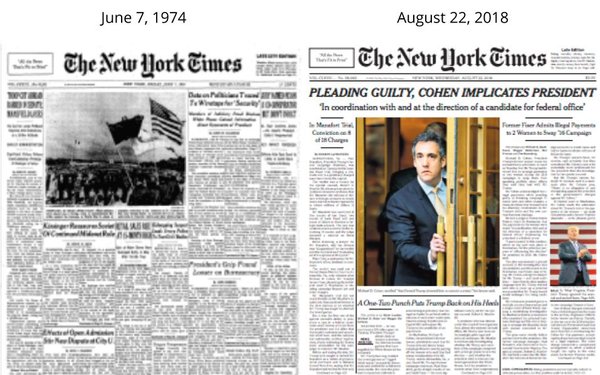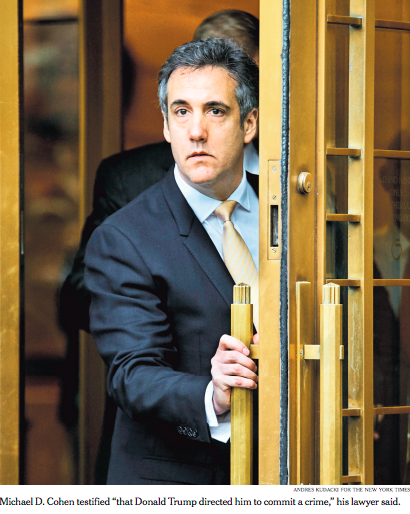
In this era of virtually
unlimited feeds of digital news and information -- both fake and real -- I’d like to suggest you step back and process the story of the day the old-fashioned way: in print. Or at least, in a
digitized form of print: PDFs of the front page of a June 7, 1974 edition and today’s edition of the front page of The New York Times.
Both editions covered similar
stories -- a sitting President of the United States being named an unindicted co-conspirator in a federal crime -- but the circumstances surrounding them, and the way the Times played them,
are very different.
Using the the paper’s aptly named historic archives -- the
“TimesMachine” -- you’ll see the paper played the news surrounding President Nixon as the right-hand lead story in what was then an eight-column front page. Today, the paper played Trump’s involvement in personal attorney Michael Cohen’s guilty plea as a banner across
all six columns of its current front page.
advertisement
advertisement
I’d need to speak to the paper’s Page One editors in both years to understand the difference in how they played those stories,
but I’m going to infer that it is partly the difference in the nature of the two stories, as well as the difference in the times.
When Nixon was explicitly implicated in the
Watergate cover-up it was new territory for a major national newspaper to cover news about a sitting President’s involvement in a federal crime. Forty-four years later, the memory of Watergate
has been ingrained in our collective consciousness and has hung over the Trump Administration, at least since Robert Mueller was named Special Counsel to investigate the Trump Campaign’s role in
Russia’s interference in the 2016 Presidential election.
I’m not going to use today’s column to comment on the nature of those crimes, the legal merits or the
politics. I’m just weighing in on a media experience of it and suggesting that if you simply filter the news from the vantage point of one of the most highly curated media experiences you can
still experience -- the front page of the print edition of The New York Times -- you’ll get the message.
A picture may be worth a thousand words, but when the picture
is a four-color one on the front page of The New York Times showing the President’s personal attorney leaving a courthouse after pleading guilty and testifying that he was directed by
the President to pay hush money to two women during the 2016 campaign to keep them from speaking publicly about affairs they said they had with him, it’s got to be worth something more than
that.
